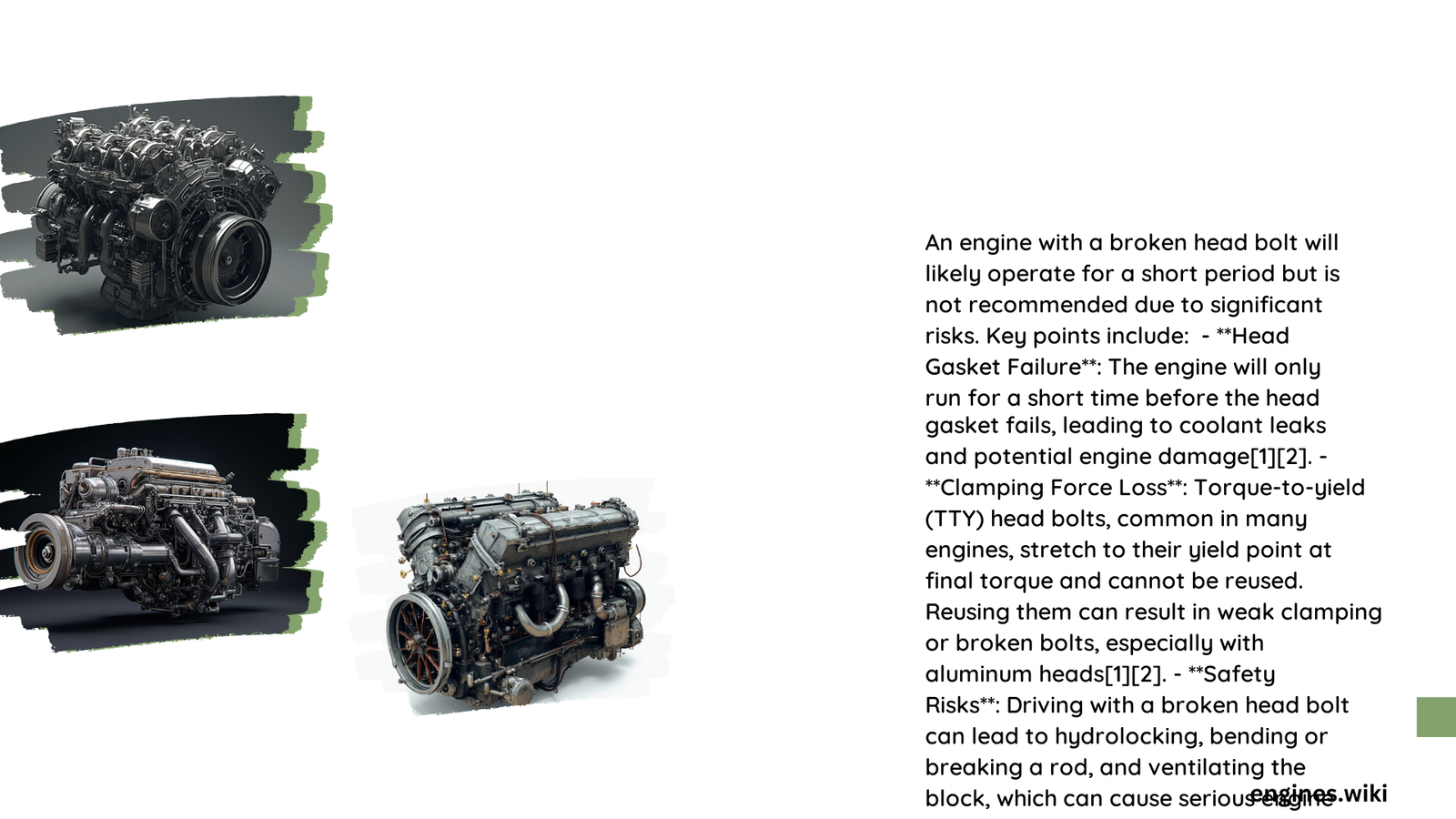A broken head bolt can temporarily allow an engine to run, but it poses severe risks to your vehicle’s performance and structural integrity. The compromised connection between the cylinder head and engine block leads to immediate and potentially catastrophic consequences, including coolant leaks, power loss, and potential complete engine failure. Continuing to operate a vehicle with a broken head bolt is strongly discouraged due to the high probability of extensive and expensive damage.
Will an Engine Operate with a Broken Head Bolt?
Technical Performance Implications
An engine can technically run with a broken head bolt, but the operational risks are extremely high. The structural compromise creates multiple critical issues:
Performance Degradation Metrics
- Power Reduction: 15-30% horsepower loss
- Fuel Efficiency Decline: Up to 25% increased fuel consumption
- Potential Catastrophic Failure: High probability within 100-500 miles
What Symptoms Indicate a Broken Head Bolt?
Recognizing the signs of a broken head bolt is crucial for preventing extensive engine damage:
| Symptom | Severity | Immediate Action Required |
|---|---|---|
| Engine Misfiring | High | Immediate Inspection |
| White Exhaust Smoke | Critical | Stop Driving |
| Coolant Contamination | Severe | Professional Diagnosis |
| Overheating | Extreme | Cease Vehicle Operation |
How Quickly Can Damage Occur?
The timeline for potential engine destruction varies based on several factors:
- Driving Conditions
- Highway Driving: Faster potential damage
- City Driving: Slower degradation
-
Load and Temperature: Accelerate wear
-
Bolt Location and Damage Extent
- Partial Bolt Failure: Less immediate risk
- Complete Structural Separation: Imminent Failure
What Are the Potential Repair Costs?
Repair expenses can escalate rapidly:
– Minor Repair: $500 – $1,500
– Moderate Damage: $1,500 – $3,500
– Complete Engine Replacement: $3,500 – $7,000
Why Immediate Professional Assessment Matters
Professional mechanics recommend:
– Immediate diagnostic evaluation
– Comprehensive system inspection
– Precise repair or replacement strategy
Technical Recommendations
Do Not:
– Continue driving with a known broken head bolt
– Attempt temporary repairs
– Ignore warning signs
Do:
– Tow the vehicle to a professional
– Request comprehensive engine diagnostic
– Plan for complete head bolt replacement
Mechanical Complexity Explained
Head bolts are critical fasteners that:
– Seal combustion chambers
– Maintain precise cylinder head alignment
– Withstand extreme temperature and pressure
A single compromised bolt can trigger cascading mechanical failures.
Conclusion

While an engine might technically run with a broken head bolt, the risks far outweigh any potential short-term operation. Immediate professional intervention is crucial to prevent catastrophic and expensive engine damage.
